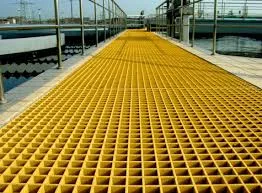
-
 Afrikaans
Afrikaans -
 Albanian
Albanian -
 Amharic
Amharic -
 Arabic
Arabic -
 Armenian
Armenian -
 Azerbaijani
Azerbaijani -
 Basque
Basque -
 Belarusian
Belarusian -
 Bengali
Bengali -
 Bosnian
Bosnian -
 Bulgarian
Bulgarian -
 Catalan
Catalan -
 Cebuano
Cebuano -
 China
China -
 China (Taiwan)
China (Taiwan) -
 Corsican
Corsican -
 Croatian
Croatian -
 Czech
Czech -
 Danish
Danish -
 Dutch
Dutch -
 English
English -
 Esperanto
Esperanto -
 Estonian
Estonian -
 Finnish
Finnish -
 French
French -
 Frisian
Frisian -
 Galician
Galician -
 Georgian
Georgian -
 German
German -
 Greek
Greek -
 Gujarati
Gujarati -
 Haitian Creole
Haitian Creole -
 hausa
hausa -
 hawaiian
hawaiian -
 Hebrew
Hebrew -
 Hindi
Hindi -
 Miao
Miao -
 Hungarian
Hungarian -
 Icelandic
Icelandic -
 igbo
igbo -
 Indonesian
Indonesian -
 irish
irish -
 Italian
Italian -
 Japanese
Japanese -
 Javanese
Javanese -
 Kannada
Kannada -
 kazakh
kazakh -
 Khmer
Khmer -
 Rwandese
Rwandese -
 Korean
Korean -
 Kurdish
Kurdish -
 Kyrgyz
Kyrgyz -
 Lao
Lao -
 Latin
Latin -
 Latvian
Latvian -
 Lithuanian
Lithuanian -
 Luxembourgish
Luxembourgish -
 Macedonian
Macedonian -
 Malgashi
Malgashi -
 Malay
Malay -
 Malayalam
Malayalam -
 Maltese
Maltese -
 Maori
Maori -
 Marathi
Marathi -
 Mongolian
Mongolian -
 Myanmar
Myanmar -
 Nepali
Nepali -
 Norwegian
Norwegian -
 Norwegian
Norwegian -
 Occitan
Occitan -
 Pashto
Pashto -
 Persian
Persian -
 Polish
Polish -
 Portuguese
Portuguese -
 Punjabi
Punjabi -
 Romanian
Romanian -
 Russian
Russian -
 Samoan
Samoan -
 Scottish Gaelic
Scottish Gaelic -
 Serbian
Serbian -
 Sesotho
Sesotho -
 Shona
Shona -
 Sindhi
Sindhi -
 Sinhala
Sinhala -
 Slovak
Slovak -
 Slovenian
Slovenian -
 Somali
Somali -
 Spanish
Spanish -
 Sundanese
Sundanese -
 Swahili
Swahili -
 Swedish
Swedish -
 Tagalog
Tagalog -
 Tajik
Tajik -
 Tamil
Tamil -
 Tatar
Tatar -
 Telugu
Telugu -
 Thai
Thai -
 Turkish
Turkish -
 Turkmen
Turkmen -
 Ukrainian
Ukrainian -
 Urdu
Urdu -
 Uighur
Uighur -
 Uzbek
Uzbek -
 Vietnamese
Vietnamese -
 Welsh
Welsh -
 Bantu
Bantu -
 Yiddish
Yiddish -
 Yoruba
Yoruba -
 Zulu
Zulu
fgd scrubber
The Importance of FGD Scrubbers in Industrial Processes
Flue Gas Desulfurization (FGD) scrubbers are crucial components in many industrial processes, particularly in power plants, to minimize sulfur dioxide (SO2) emissions. The environmental impacts of SO2, a significant contributor to acid rain and respiratory issues, necessitate effective control measures. FGD scrubbers play a vital role in mitigating these emissions, enhancing air quality, and complying with environmental regulations.
Understanding FGD Scrubbers
FGD scrubbers operate on the principle of chemical absorption. These systems typically use a reagent, such as lime or limestone, to react with SO2 in the flue gas. The resulting chemical reaction forms a solid byproduct, which can be further processed or disposed of safely. There are various types of FGD scrubbers, including wet and dry scrubbers, each tailored for specific industrial settings and operational requirements.
Wet scrubbers, which are the most common, use a slurry of lime or limestone mixed with water to absorb SO2. The foggy mixture of flue gas and scrubbing liquid produces an efficient means of capturing toxic gases. The resultant product, predominantly gypsum, can be repurposed in construction materials, which adds a dimension of sustainability to the process.
Dry scrubbers, on the other hand, utilize dry reagents to react with flue gases. These systems are often favored in scenarios where water usage needs to be minimized, presenting a practical solution for arid regions or facilities with limited water resources.
Benefits of FGD Scrubbers
The implementation of FGD scrubbers brings numerous benefits. Firstly, they significantly reduce SO2 emissions, allowing industries to meet stringent air quality standards set by regulatory bodies. In regions where air quality is a persistent issue, the installation of FGD systems can lead to marked improvements, benefiting public health and the environment.
fgd scrubber

Secondly, the use of FGD scrubbers can enhance operational efficiency and recover valuable byproducts. For instance, the gypsum byproduct from wet scrubbers has a strong market demand in the construction industry. Thus, FGD scrubbers not only serve as pollution control measures but can also contribute to a company’s bottom line through material recovery.
Moreover, these systems help industries maintain compliance with environmental regulations. Non-compliance with emission standards can lead to substantial fines and a negative public image, making the investment in FGD technology not only environmentally responsible but economically prudent.
Challenges and Future Directions
Despite their advantages, FGD scrubbers are not without challenges. The initial capital and ongoing operational costs can be significant, which may deter some industries from adopting this technology. Additionally, the maintenance of these systems requires specialized knowledge and can involve downtime, contributing to overall operational inefficiency.
As regulations continue to evolve and place greater emphasis on reducing greenhouse gases, future advancements in FGD scrubber technology will likely emphasize efficiency, cost reduction, and adaptability. Innovations in reagent development are already being explored to enhance the performance of scrubbers while minimizing waste. Furthermore, integrating FGD systems with carbon capture technologies presents a promising frontier, potentially leading to even more comprehensive pollution control solutions.
Conclusion
In conclusion, FGD scrubbers are an integral part of contemporary industrial operations, particularly in mitigating sulfur dioxide emissions. Their ability to significantly reduce these harmful pollutants makes them invaluable in advancing environmental protection efforts. While there are challenges associated with their implementation, ongoing advancements in technology may enhance their efficiency and cost-effectiveness. As industries seek to balance operational goals with environmental responsibilities, FGD scrubbers will undoubtedly play a pivotal role in shaping a cleaner, more sustainable industrial future.









